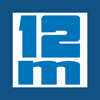Designed in 1931 by the Kroger brothers, early boats were built by Kroger’s own boatyard in Warnemunde and the Abeking & Rasmussen yard in Bremen. The first sharpies delivered to the UK came in a container to Kings Lynn docks where the story goes the owners drew lots to see which one they would own then unpacked and raced the dinghies straight away. The boats cost £45 each and came packed in an expensive mahogany crates. A consignment of 6 boats was also delivered to Barnt Green sailing club in Birmingham. The class proved ideal for the tidal waters around North Norfolk and the fleet grew rapidly, mainly based at Brancaster Staithe SC. The class was adopted by The United Hospitals SC and also The Royal Corinthian SC and was widely sailed along the East coast and the South coast particularly around Chichester and Langstone harbours.
The class was selected for the Olympics in Australia in 1956 where New Zealand won gold, Australia Silver and the UK won bronze.
The Flying Dutchman replaced the sharpie as the Olympic class in 1960 and the fleet numbers declined. Australia adapted the design by making a lightweight version with the same hull shape but built from quarter inch ply, the gaff rig replaced with an aluminium mast and a fully battened mainsail and the addition of a spinnaker and trapeze. This class (the lightweight sharpie) is still widely raced in Australia today. The solid construction of the class has been its saviour. Many hulls have survived years of neglect and have been cleaned up and restored back to beautiful condition. There are now approximately 60 sharpies in the UK which are in racing condition with fleets also in existence in Holland, Germany and Portugal. There is a national championship held every year which regularly attracts entries from overseas and a European championship hosted in rotation by England, Holland, Germany and Portugal. The Europeans regularly attract fleets of over 50 boats.
The class continues to thrive, with several boats being restored and a keen racing and social circuit. It is a notable feature of the class that many current owners are second or third generation owners, and it is surprising how many sailors have encountered the sharpie over the years.
